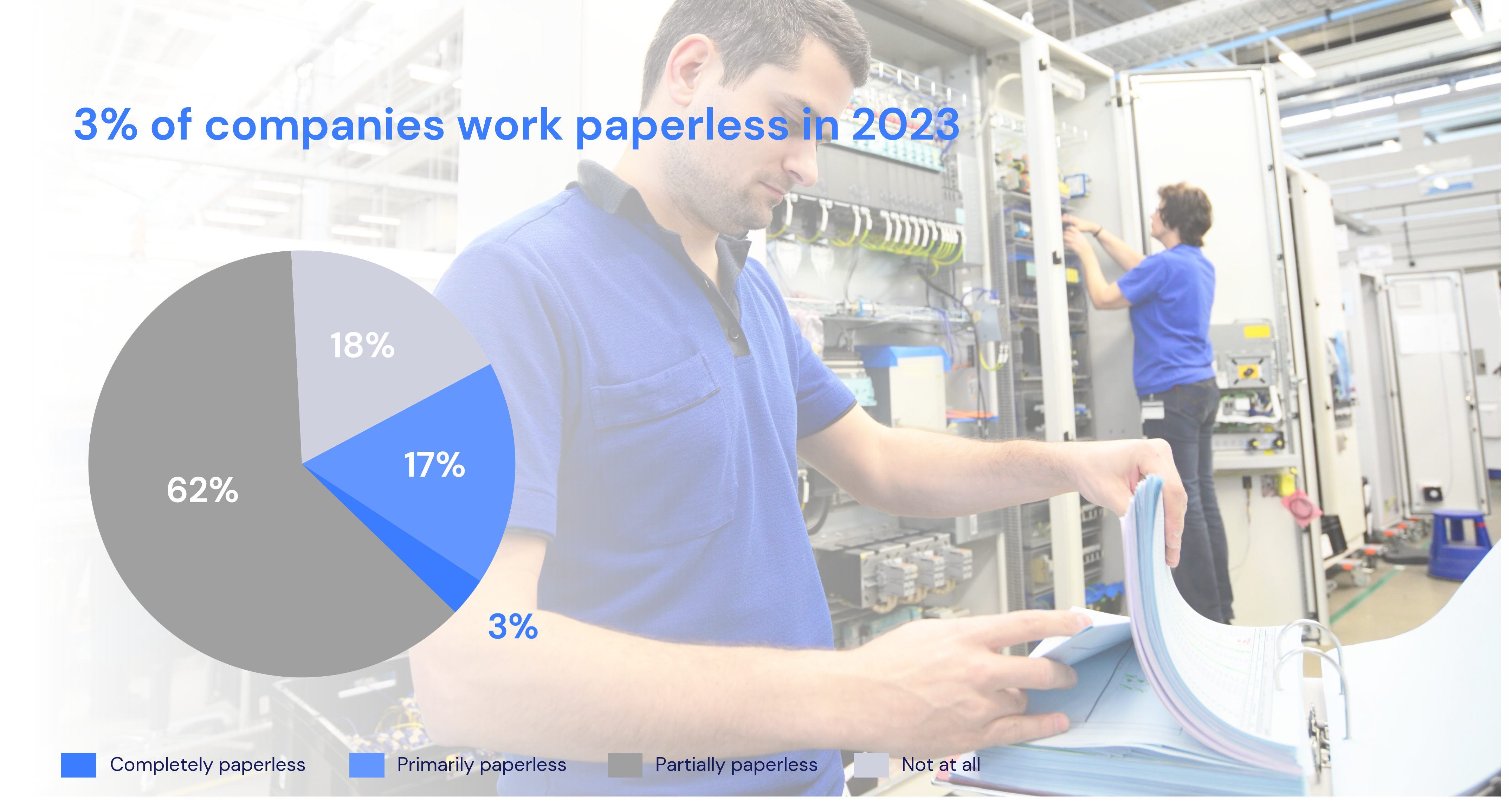Working Paperless in the Industry: Boosting Efficiency and Sustainability
In today's digital era, the concept of working paperless has gained significant traction in various industries. Transitioning from traditional paper-based processes to digital workflows offers numerous benefits for businesses. In this article, we explore the advantages and steps to implement a paperless work environment in the industry.
Advantages of Working Paperless in the Industry:
Enhanced Efficiency: By eliminating paper-based processes, businesses can streamline their operations and increase efficiency. Digital workflows enable faster document sharing, easier collaboration, and automated task management. This leads to improved productivity and reduced turnaround times.
Cost Savings: Adopting a paperless work environment can significantly reduce expenses associated with paper, printing, storage, and document distribution. Additionally, businesses can save on postage and courier fees, resulting in substantial cost savings over time.
Improved Data Security: Paper documents are susceptible to loss, theft, or damage. Going paperless mitigates these risks by storing digital files in secure, encrypted systems. Access controls and user permissions further enhance data security, ensuring that sensitive information remains protected.
Easy Document Retrieval: Searching for specific information in a mountain of paper documents can be time-consuming and frustrating. With digital documents, keyword searches and filters enable quick and accurate retrieval of information, boosting productivity and decision-making.
Environmental Sustainability: The industry has a significant environmental impact, with paper consumption being a contributing factor. By going paperless, businesses can reduce their carbon footprint, conserve natural resources, and contribute to a more sustainable future.
What is the current status of working paperless?
We recently conducted a survey on this topic with 175 companies in Germany, Austria and Switzerland. The result: Only 3% of the companies work paperless so far.

Step-by-Step Guide to Achieving Paperless Work with a Connected Worker Platform
In an increasingly digitalized business world, working paperless has become a crucial goal for many companies. One effective method to achieve this transition is by implementing a connected worker platform. In this article, we will explain the step-by-step process of how to successfully work paperless using such a platform.
Step 1: Needs Analysis and Goal Setting Conduct a thorough needs analysis to determine the specific requirements of your company. Define clear goals for transitioning to paperless work, such as reducing paper consumption, improving process efficiency, and increasing employee productivity.
Step 2: Choosing a Connected Worker Platform Research different connected worker platforms available on the market and select the one that best meets your needs. Look for features such as mobile data collection, electronic forms, digital workflows, data integration, and a user-friendly interface.
Step 3: Planning and Preparation Create a detailed plan for implementing the connected worker platform. Define the phases of the rollout, identify pilot areas or projects, and plan training for your employees. Ensure that you have sufficient IT resources to ensure a smooth implementation.
Step 4: Integration and Data Migration Work closely with the provider of the connected worker platform to ensure seamless integration with your existing systems. Make sure that all relevant data from your previous paper documents is migrated into the new system to ensure a smooth transition.
Step 5: Training and Adoption Provide training for your employees to ensure they are familiar with the new platform and can effectively use it. Explain the benefits of working paperless and demonstrate how the platform can improve their workflow. Foster a culture of acceptance and encourage active employee participation.
Step 6: Continuous Improvement and Optimization Continuously monitor the progress of transitioning to paperless work. Gather feedback from your employees and identify areas for potential optimization. Utilize the analytical features of the connected worker platform to gain insights and make further efficiency enhancements.
Step 7: Expansion and Scalability After successfully implementing paperless work in pilot areas, gradually expand the use of the connected worker platform to other departments or projects. Monitor the scalability of the platform and make necessary adjustments to accommodate company growth.
In conclusion, by following these step-by-step guidelines and leveraging a connected worker platform, you can achieve paperless work in your organization. Embracing digitalization not only reduces paper waste but also improves efficiency, collaboration, and sustainability. Working paperless is a significant step towards a more streamlined and environmentally-friendly future.
Do you finally want to work paperless in your production?
Get to know the software in just 3 minutes
Discover the functions of Operations1 in an interactive product tour and get to know our platform.
